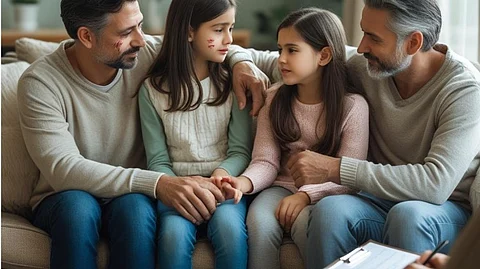Self-Care for Families During the Healing Process
As families work through trauma together, it's essential to prioritize self-care for all members. This includes parents and siblings who may not have directly experienced the trauma but are affected by its impact on the family. Self-care is not selfish; it's a necessary component of maintaining the energy and emotional resources needed to support each other through the healing process.
Self-care strategies for families:
Encourage individual hobbies and interests: Support each family member in pursuing activities that bring them joy and relaxation.
Practice stress-reduction techniques as a family: Learn and implement techniques like deep breathing, meditation, or yoga together.
Ensure adequate rest and nutrition: Prioritize healthy sleep habits and balanced nutrition to support physical and emotional well-being.
Seek support from extended family or community resources: Don't hesitate to reach out for help when needed, whether it's practical support or emotional guidance.
Set boundaries: Teach family members to recognize and communicate their limits, respecting each other's need for space and time.
Create tech-free zones or times: Designate periods for unplugging from devices to focus on family connection and relaxation.
Engage in physical activities together: Regular exercise can boost mood and reduce stress for the whole family.
Practice gratitude: Incorporate gratitude sharing into daily routines to foster a positive family atmosphere.
Allow for individual processing time: Respect that each family member may need personal time to reflect and process their emotions.
By prioritizing self-care, families can maintain the emotional reserves necessary to support each other through the challenges of trauma recovery. It also models healthy coping mechanisms and the importance of balance in life, skills that will serve all family members well beyond the healing process.
Conclusion: Embracing Hope and Resilience in Family-Centered Healing
Family-centered healing for mental trauma treatment offers a powerful way to recover and become stronger. By working together, families can not only overcome the challenges of trauma but also build deeper, more resilient bonds. This approach recognizes that healing is a journey for the whole family, one that can change family dynamics and individual lives for the better.
Remember that healing is possible, and with the right support, families can come out of trauma stronger and more united than ever. The process may be challenging, but it also gives families a chance to grow, understand each other better, and develop new strengths and ways of coping. Each step taken together makes the family more resilient and better able to heal.
If your family is struggling with the effects of trauma, don't be afraid to ask for professional help. There are many resources and treatment options available to support your family's journey towards healing and recovery. Together, you can start on a path of healing, growth, and renewed connection, building a stronger foundation for your family's future.
For more information on mental trauma healing and specialized treatment options, visit our Teen Trauma Treatment page. Taking that first step towards seeking help is a brave act that can open the door to deep healing and positive change for your entire family.


